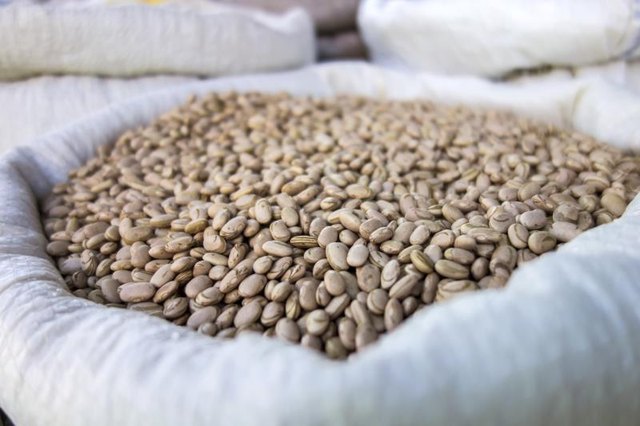
Is there anything out there that is safe to use?
Over recent years, there's been an uptick in research and conversation around toxins, and while consumer education should leave us empowered, it seems like we're left walking around with a laundry list of chemicals to avoid.
And though there's been over 25 years of groundbreaking studies, rising public awareness and new government regulations, we've still got a lot to learn. What we do know is that there are a few substances — many of which you have in your home right now — that are more dangerous than you think.
Thankfully, we've uncovered some simple alternatives to these home toxins so you can safeguard your health and home sanctuary, and improve your local environment to boot!
Plus, we all need a great excuse for redecorating.
1. Antibacterial Soap
Just by washing your hands you could be wreaking havoc on your hormones. The antimicrobial chemical triclosan found in many antibacterial soaps, body washes, toothpastes and some cosmetics may disrupt your thyroid function and hormone levels. Additionally, many health experts believe that overuse of antibacterial chemicals promotes the growth of bacteria that are resistant to antibacterial treatment.
For a better alternative, just use simple soap and water. If you like to use hand sanitizer, look for one that is alcohol-based and doesn’t list triclosan (or triclocarban) or other antimicrobial or antibacterial ingredients.
2. Flame Retardants
As a clever solution to avoid home fires, flame retardants were added to furniture in the early 1970s. The most harmful of them are polybrominated diphenyl ethers (PBDEs, commonly found in household plastics as well as furniture cushioning), which have been shown to contribute to lowered cognitive functioning, according to the Washington Post.
PBDEs are also linked to fertility problems and lower birth weights. So how in the world do PBDEs get into your body? They are constantly being expelled as sneaky little dust particles that end up on the floor (where children play) or on your hands. Then, when you eat something they are easily transmitted into your body.
In addition to upholstered furniture, flame retardants are found in 80 percent of children’s products, such as changing pads, nursing pillows and car seats. The most commonly used is chlorinated tris, which may contribute to increased tumor rates in kidneys and testes, some of which are cancerous.
While it may not be the smartest idea to avoid flame retardants altogether, there are ways to minimize their impact. Dust and vacuum your home frequently — dust can bind to flame-retardant particles, making them more potent.
3. Teflon Pans
While nonstick cookware can be a real lifesaver for cleanup, the toxic fumes released from Teflon pots and pans at high temperatures can kill pet birds (the fumes from an overheated pan can kill a bird in just a few seconds) and cause humans to develop flu-like symptoms. And according to an EWG-commissioned test, cooking for just two to five minutes on a conventional stovetop was enough time for Teflon coating to break apart and emit toxic particles and gases.

Perfluorinated chemicals (PFCs) are found in supercharged doses in Teflon-coated pots and pans. These chemicals have a very long half-life, making the true level of their damage hard to pinpoint; however, initial studies show that they may cause infertility, low birth weight, elevated cholesterol, abnormal thyroid hormone levels, liver inflammation and a weakened immune system.
So here’s what you buy instead: Look for pots and pans that don’t have the words “Gore-Tex” or “Teflon” (like cast iron or copper cookware). These safer pans may be more difficult to clean, but what’s the cost of your health? If it’s outside your budget to ditch your Teflon pans right now, you can minimize your risk by using an exhaust fan over the stove and by heating your pans at temperatures lower than 500 degrees Fahrenheit. And, of course, always keep pet birds out of the kitchen!
4. BPA
For the past 40 years the chemical BPA has been used to harden plastic, so these suckers are tough to avoid. According to research, more than 90 percent of us have BPA in our bodies right now (yikes).
The main culprits? We’re most exposed to the chemical from eating food that has been stored in containers made with BPA. And while there has been a large movement to switch to BPA-free water bottles and baby bottles, BPA is lurking in your canned goods as well.
The FDA used to say that BPA was safe at current low levels, but with new research, there is now “some concern” about BPA’s potential effects on the brain, behavior and prostate glands in fetuses, infants and young children.

To protect yourself against BPA, opt for glass-jarred fruits and vegetables instead of cans, especially for tomatoes and tomato paste (acids in the tomatoes can leach BPA out of canned linings and into your food). You should also only use glass or ceramic dishes in the microwave. Microwaving plastic (even if it says it is “microwave safe”) can leach chemicals into food while heating, so heat your food on a stovetop whenever possible.
Also consider alternative ways to prepare foods that you may traditionally get from a can. Soak beans overnight before cooking them or simply use a pressure cooker for dried beans to enjoy them in about an hour.
5. Vinyl Shower Curtains
You know that new-shower-curtain smell? Well, according to a study by the Center for Health, Environment & Justice (CHEJ), the Washington Toxics Coalition, People for Puget Sound and the Toxic-Free Legacy Coalition, what you’re smelling is as many as 100 toxic chemicals released into the air from PVC vinyl shower curtains.
Vinyl shower curtains contain many harmful chemicals, including volatile organic compounds (VOCs), phthalates and organotins. Vinyl curtains often contain high levels of phthalates, which are used to soften the material.
While the full effects of this chemical remain unknown, certain kinds are considered by the National Toxicology Program as “reasonably anticipated to be a human carcinogen.” Additionally, toxic chemical off-gassing from PVC shower curtains may contribute to respiratory irritation, damage to the central nervous system, liver and kidneys, nausea, headaches and loss of coordination.
But there’s good news! It’s easy to avoid these risks by simply choosing curtains made of cotton, polyester or nylon.
6. Formaldehyde
Formaldehyde is used in many manufacturing processes. When an item gives off formaldehyde, it is released into the air (it has a pickle-like odor) through a process called off-gassing, making it part of the VOC chemical group. A known toxin, formaldehyde is commonly found in pressed-wood products, (such as plywood, particle board, paneling) foam insulation, wallpaper and paints, some synthetic fabrics and some cosmetics and personal products.
According to the National Cancer Institute, short-term exposure to formaldehyde may result in immediate symptoms, including eye, nose and throat irritation, coughing, headaches, dizziness and nausea. Long-term exposure to formaldehyde may cause some types of cancer.
To reduce your exposure to formaldehyde, opt for furniture that is 100 percent hardwood, and ask about the formaldehyde testing reports for the product before purchasing. You should be able to obtain this material from the manufacturer.
Also, consider adding plants that can remove formaldehyde from your home and elevate your decor! Bamboo palm, Chinese evergreen, English ivy, gerbera daisy and peace lily are examples of plants particularly good at removing formaldehyde, as well as other airborne toxins, from indoors.

7. Synthetic Pesticides
If it can harm a pest, chances are it’s not that great for you. More research needs to go into testing synthetic pesticides to determine which ones are safe and which are not, but for now it’s best to avoid them as much as possible. Researchers have linked these pesticides to various forms of cancer, including Non-Hodgkin lymphoma. Insecticides have also been connected to brain damage in children.
Sometimes you can’t get around using a pesticide in your home, but you can avoid pests by cleaning up crumbs. If you still struggle with pests, experiment with natural pest repellents like cedar, which repels moths, citrus peels, which keeps spiders at bay, and lemon eucalyptus oil which is just as effective as DEET at repelling mosquitoes..
No comments:
Post a Comment